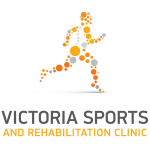Have you ever looked at a pair of runners and thought “it’s about time I replace those”? How long do you think you get out of a pair of runners or do you judge it on distance covered or replace them once your big toe is poking out of the top?
Harley, our resident runner, looked into the lifetime of a runner, the shoe not the athlete, and found a conclusion that may go against what you have been told in the past or what you believe. A review article out of Germany looked at a person’s runners, the distance they have covered, the length of time they have had them and the person’s ankle biomechanics. As well as, the shoe itself, the structural support and the sole.
Once all of these factors had been considered and addressed, the Henna review found that the appropriate running shoe should last well over 1000 kilometres. This may mean you are replacing your runners at an inappropriate time. This is assuming that the heel support, body and tongue of the shoe is intact and in good condition (Hennig, 2011).
Over the recent few months, with COVID-19 restrictions and the closure of gyms, we have seen an increase in people choosing running as their physical activity. Despite maybe not having run before, or at least not having run for some time. In turn leading to injury and/or pain. Footwear should be a key point of focus in any situation, but especially during exercising and even more so when it comes to running. The repetitive movements and motion of running can really emphasise and amplify the issues of footwear that have been mismatched to an individual.
Fun fact:
The running shoe is thought to have altered the natural running style and mechanics of the human body. Historically, prior to the running shoe it is believed that humans ran with a toe-heel technique, meaning we used to land on the toes and the ball off the foot, then rolling back to the heel. This therefore forced the calf to take the load with an eccentric muscle contraction. Due to the running shoe we now run with a heel-toe technique, this has caused increased impact and load on the lower limb, including: the knee and ankle joints.
Tips:
- When looking for a pair of runners, look for something with a secure and supportive heel.
- You should not be able to easily fold your shoe in half, avoid the runners with a really soft foam sole.
- Choose a runner with space between the end of your toes and the end of the shoe, the gap should be a space of at least half of the width of your thumb and up to the full width of your thumb.
- Consult a professional to assist you in choosing the right shoe for you.
Anecdotally, prior to a 10 week trip through Europe I purchased a pair of Asics Keyano 26. I spent the trip walking and running approximately 16 kilometres per day. Over the duration of the trip I had walked and run approximately 1,120 kilometres in the runners. When arriving home they continued to be supportive and I was able to continue to walk and run in them for months afterwards, I admittedly was not running or walking as much as I had whilst away but the runners were ready and comfortable whenever I wanted them.
Hennig, E. (2011). Eighteen years of running shoe testing in Germany – a series of biomechanical studies. Footwear Science, 3(2), 71-81. doi: 10.1080/19424280.2011.616536
